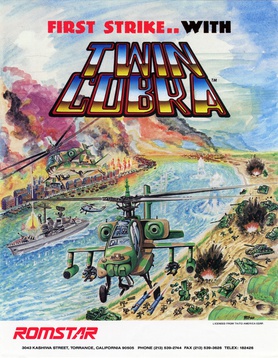
Twin Cobra, known as Kyukyoku Tiger in Japan, is a vertically scrolling shooter developed by Toaplan and released for arcades in 1987 by Taito in Japan and Europe, then in North America by Romstar. It is a sequel to the 1985 arcade game Tiger-Heli. Controlling the titular attack helicopter, the players must fight endless waves of military vehicles while avoiding collision with their projectiles and other obstacles. It was the fourth shoot 'em up game from Toaplan, and their tenth video game overall. It was ported to multiple platforms, with each done by different third-party developers that made several changes or additions.

Pinball Fantasies is a 1992 pinball video game originally developed by Digital Illusions and published by 21st Century Entertainment in Europe for the Amiga home computers. It is the sequel to Pinball Dreams, which was released earlier in the same year on multiple platforms. In the game, players can choose between any of the four available playfields, both of which have their own thematic and main objectives in order to obtain the highest score possible.

Soccer Kid is a 1993 side-scrolling platform game developed and published by Krisalis Software in Europe for the Amiga. The player assumes the role of the titular main protagonist who travels across several countries around the world to repair the World Cup by retrieving pieces that were scattered by the alien pirate Scab, the main antagonist who failed to steal and add it to his trophy collection in a robbery attempt. Its gameplay mainly consists of platforming and exploration elements, with a main single-button or two-button configuration, depending on the controls setup.
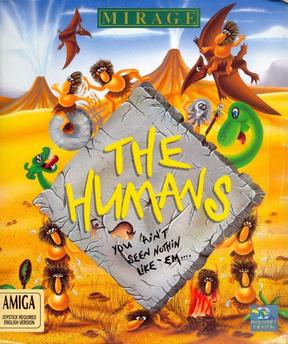
The Humans is a puzzle-platform video game developed by Imagitec Design in Dewsbury, England and originally published by Mirage Technologies for the Amiga in May 1992. It was later ported to other home computers and consoles. The goal of the game varies per level but usually revolves around bringing at least one of the player-controlled humans to the designated end area marked by a colored tile. Doing this requires players taking advantage of the tribe's ability to build a human ladder and use tools such as spears, torches, wheels, ropes and a witch doctor in later levels.

Blue Lightning is a 1989 combat flight simulation video game developed by Epyx and published by Atari Corporation in North America and Europe for the Atari Lynx. It was also released in Japan on December 1 of the same year, where it was instead distributed by Mumin Corporation. It was one of the launch titles that were released along with the system in North America and was jointly written by Stephen Landrum, lead programmer Brian Bowhay, who also developed the Lynx hardware and Chip's Challenge creator Chuck Sommerville.
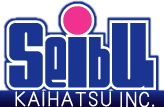
Seibu Kaihatsu Inc. was a Japanese manufacturer of arcade games. The company was founded in 1982 at Chiyoda-ku, Tokyo, Japan as Seibu Denshi Inc. (有限会社セイブ電子), but changed to its current name sometime in 1984. It is currently owned by Hitoshi Hamada.
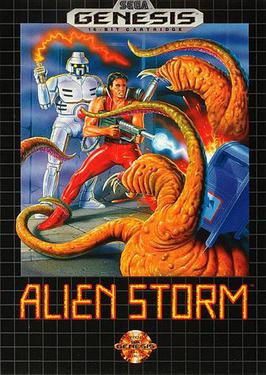
Alien Storm (エイリアンストーム) is a beat 'em up shooter released as an arcade video game by Sega in 1990. It was ported to the Genesis/Mega Drive and Master System. The Mega Drive version was re-released on Wii's Virtual Console in 2007 and was also included on Sonic's Ultimate Genesis Collection for Xbox 360 and PlayStation 3. The game was also re-released on the Nintendo Switch Online + Expansion Pack in 2022.

Raiden II is a 1993 vertical scrolling shooter arcade game that was developed by Seibu Kaihatsu. It was the second game in the Raiden series of vertical scrolling shooter arcade games that started with Raiden.
Imagitec Design was a video games development company founded in 1989, based in the UK. The main person involved was Barry Leitch, who worked as a composer for many of the company's soundtracks.

Raiden Project, known outside Japan as The Raiden Project, is a scrolling shooter video game developed and published by Seibu Kaihatsu for the PlayStation. It is a compilation of the arcade games Raiden (1990) and Raiden II (1993). It was released in Japan on January 27, 1995, for North America by Sony Computer Entertainment as an original launch title on September 9, 1995, and in Europe by Ocean Software in November 12, 1995. This was the only console release of Raiden II and unlike previous ports, these versions are based directly on the arcade originals. The Project version of the first Raiden was available as a download from the Japanese PlayStation Network store, which could be played on either a PlayStation 3 or a PlayStation Portable.
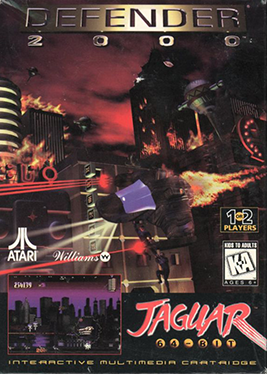
Defender 2000 is a 1996 scrolling shooter video game developed by Llamasoft and published by Atari Corporation for the Atari Jaguar. Part of Atari's 2000 series of arcade game revivals, it is an update of Eugene Jarvis' arcade game Defender (1981). The premise takes place in a future where the Alpha Promixian empire attack mining settlements on distant resource planets. Gameplay is divided into three modes, with the player acting as part of the System Defense Team commanding the Threshold ship to defeat waves of invading aliens while protecting humans.

Steel Talons is a 3D combat flight simulator arcade game released by Atari Games in 1991. The player takes on the role of a pilot for an "AT1196 Steel Talons combat helicopter". Steel Talons was ported to the Sega Genesis, Atari Lynx, Atari Falcon, and the Super Nintendo Entertainment System. A Jaguar port was announced, but never released.
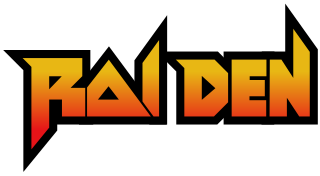
Raiden is a series of arcade games by Seibu Kaihatsu initially available in arcades in Japan and later distributed to other countries by Fabtek and other arcade game manufacturers.

Toki is a run and gun platform game released in arcades in Japan in 1989 by TAD Corporation. It was published in North America by Fabtek. Designed by Akira Sakuma, the game has tongue-in-cheek humor mixed with the action. The player controls an enchanted ape who must battle hordes of jungle monsters with energy balls from his mouth. The ultimate goal is to destroy the evil wizard who cast a spell on the title protagonist; thereby transforming him from an ape back into a human, and rescuing the kidnapped princess. The game was ported to several video game consoles and home computers.

Dragon: The Bruce Lee Story is a fighting video game developed and originally published by Virgin Interactive Entertainment in Europe for the Sega Genesis in June 1994. It is based on the 1993 film of the same name, which is a semi-fictionalized account of the life of Hong Kong-American actor and martial artist Bruce Lee. Following the events of the movie, players take control of Bruce Lee across several stages that takes places in different time periods of his life and fight against some of his adversaries.

Bubsy in: Fractured Furry Tales is a platform video game developed by Imagitec Design and published by Atari Corporation for the Atari Jaguar in North America on December 1994, and Europe in January 1995. The third entry in the Bubsy series, the plot follows the titular character, who ventures through a realm of fairy tales to restore order and protect children all over the world from creatures and antagonists of corrupted fairy tales, which appeared after Mother Goose was captured by Hansel and Gretel.
Fabtek Inc. was a thriving video kit company founded in Bellevue, Washington, United States and started its operations there in 1987. Fabtek's name was derived from the initials of its founder Frank Ballouz (F.A.B.-tek), a former Atari and Nintendo of America executive who later also founded Irem America. Fabtek was known for licensing arcade games mostly from two manufacturers for distribution: Seibu Kaihatsu and TAD Corporation. Around 1990, Fabtek moved to Redmond, Washington and continued its business there until closing its business in 1999.

Super Burnout is a motorcycle racing video game developed by French studio Shen Technologies SARL and co-published by Atari Corporation and Virtual Xperience exclusively for the Atari Jaguar in North America and Europe in July 1995. It was also published in Japan by Messe Sansao during the same period. It is the first title to be created by Shen Technologies.

Blue Lightning is a 1995 combat flight simulator video game developed by Attention to Detail and published by Atari Corporation for the Atari Jaguar CD. It is a conversion of Epyx's 1989 Atari Lynx title of the same name, and one of the pack-in games for the Jaguar CD. In the game, the player assume the role of a rookie fighter pilot from the Blue Lightning squadron, taking control of multiple military aircraft across various missions to stop general Drako, who betrayed the United Nations and gained power of military organizations through corruption to expand his organized crime empire all over the world.


















